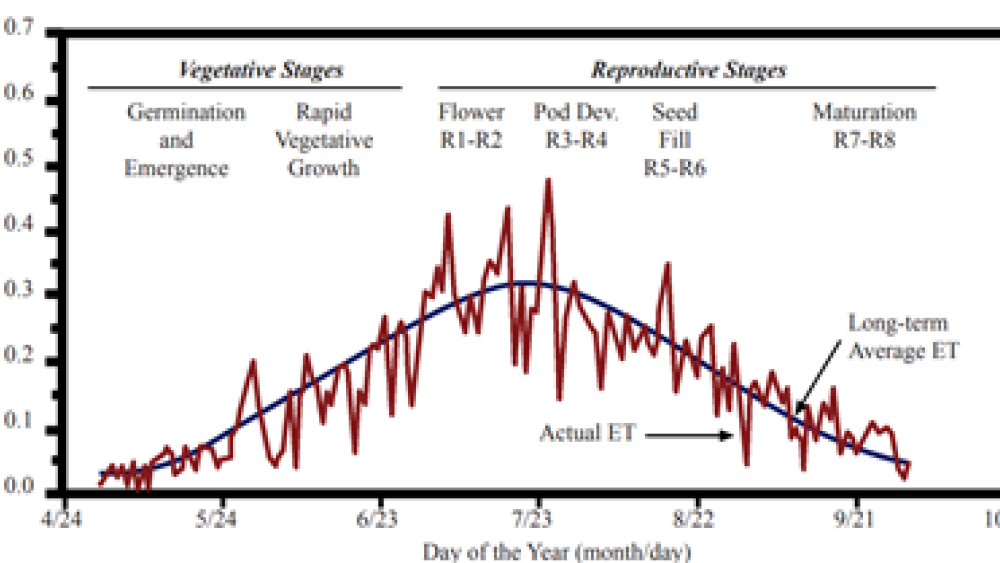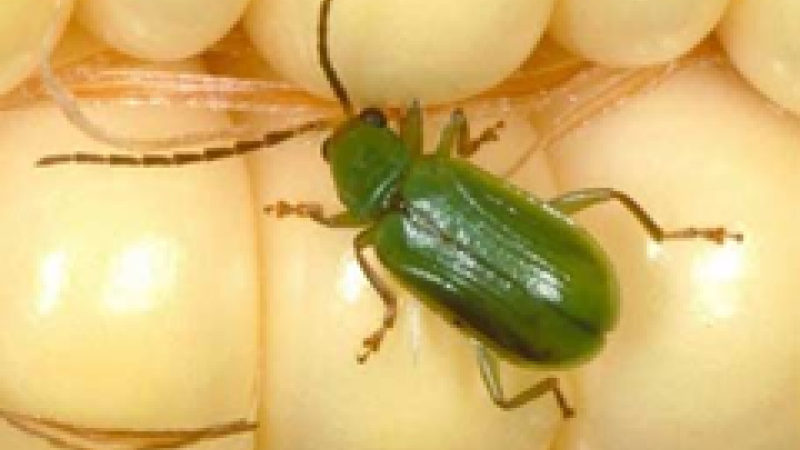Crop Water Usage
Crop water usage is a topic on the mind of many producers in the western corn belt this year. In irrigated areas, the question “How much does this crop need?” gets asked fairly often, especially when considering the lack of snow/rainfall, commodity prices, and water allocations. Let’s take a look at the two main crops grown under irrigation in the Midwest.
Corn:
Corn water use can be separated into two different parts: transpiration and evaporation. Approximately 25 percent of water during the season is lost to the atmosphere via evaporation, and the remaining 75 percent is used by the plant. Daily water usage for corn varies greatly depending on factors like air temperature, relative humidity, and wind speed. Below is a graph showing crop water use by day and growth stage.

Corn Water Usage By Stage and Date, UNL
Soybeans:
A soybean crop’s water use is much similar to corn in regards to transpiration and evaporation. However, a larger separation between vegetative and reproductive growth can be realized when irrigating a soybean crop. Soybean water needs to increase just before flowering (around June 21st) and maintain that pattern for a few weeks after, peaking at around 0.30 inches/day. Below is a graph showing water use for a soybean crop.

Soybean Water Usage by Stage and Date, UNL
Summary:
It’s important to remember that location, yield goal, and several other factors can change a crop’s water usage during the year. For example, the above graphs do not account for profile refill, activating herbicide, or preseason irrigation. However, they can be a good starting point for irrigation management.

Sources:
- https://extensionpublications.unl.edu/assets/html/g1850/build/g1850.htm
- https://extensionpublications.unl.edu/assets/pdf/g1367.pdf

